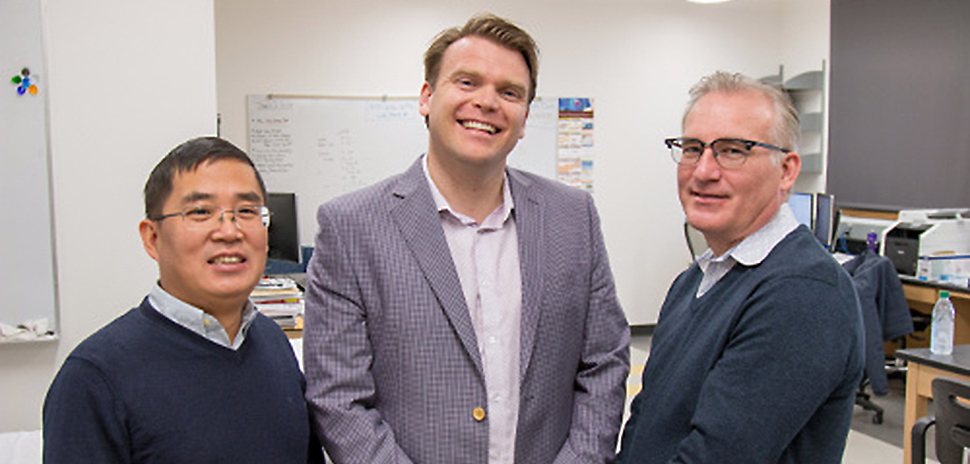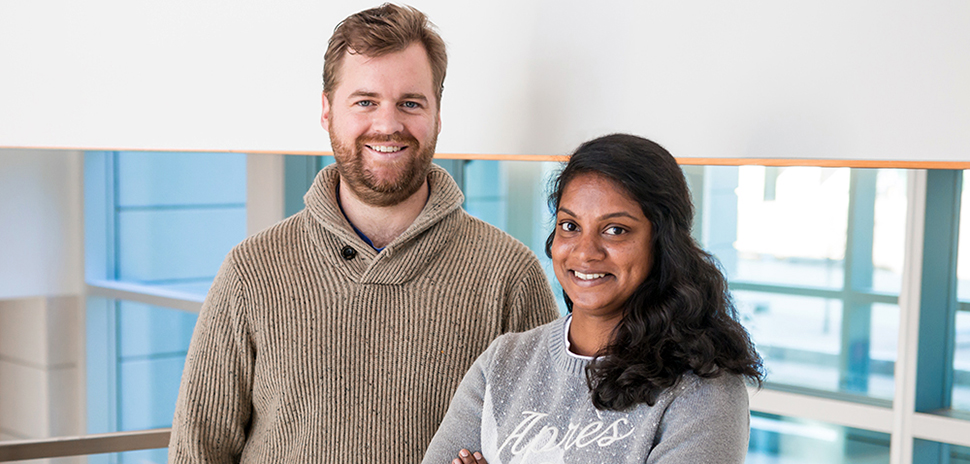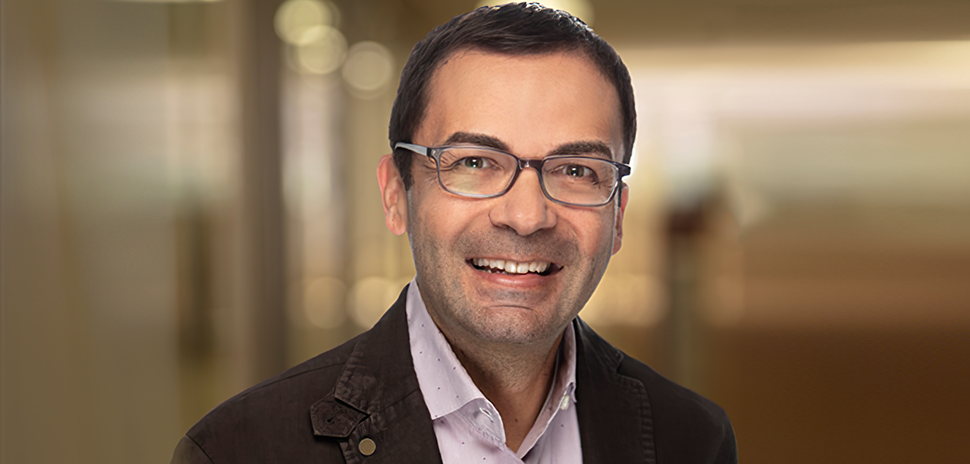IMAGE TECHNOLOGY COULD LEAD TO DIAGNOSIS, TREATMENT FOR HEART
![]() Heart failure — where the heart is too weak to pump blood throughout the body — is a serious condition that affects millions of people in the United States.
Heart failure — where the heart is too weak to pump blood throughout the body — is a serious condition that affects millions of people in the United States.
The American Heart Association has predicted that the condition will see a 46 percent increase by 2030, resulting in more than 8 million people having heart failure.
Researchers at the University of Texas at Arlington will use a $441,000 grant from the National Institutes of Health to build new image technology that can be used to study blood vessel function in heart failure patients. The research could lead to quicker diagnosis and life-saving treatment, according to the university.

Michael Nelson (center) is shown with with co-investigators Mark Haykowsky (right) and Fenghua Tian. [Photo courtesy of UTA]
Principal investigator on the research is Michael Nelson, assistant professor of kinesiology. He’s joined by Mark Haykowsky, Mortiz Chair of Geriatrics, and Fenghua Tian, a faculty research assistant in the Department of Bioengineering.
“There is no technology like this available.”
Michael Nelson
They will develop a device that studies how oxygen is delivered to skeletal muscles and how those muscles utilize oxygen, the university said.
“There is no technology like this available,” Nelson said in a release.
Since arriving at UTA two years ago, Nelson has helped bring in more than $1 million in grants. Find out more about the research here.

Dr. Jeremiah Gassensmith and Madushani Dharmarwardana [Photo Courtesy UT Dallas]
CRYSTALS SHOWED UNEXPECTED BEHAVIOR WHEN HEATED
“That was … interesting.”
Some might say that Jeremiah Gassensmith’s reaction to a discovery by him and graduate student Madushani Dharmarwardana might be a little understated.
“The crystals would bend, coil, flex or jump, they would do all kinds of things.”
Jeremiah Gassensmith
His response was to work in his University of Texas at Dallas chemistry lab that showed unusual behavior in samples of crystals being used in research on a family of organic semiconducting materials called naphthalene diimides, which change color from orange to yellow as it is heated.
Dharmarwardana noticed that when the crystals were heated, they would move — something they didn’t expect.
“The crystals would bend, coil, flex, or jump, they would do all kinds of things,” Gassensmith said in a release. “That was … interesting.”
The researchers said the behavior could be used for applications such as micro machines, sensors, or tiny actuators for medical devices, and artificial muscles.
Find out more here. And watch the video below.
MORE RESEARCH NEWS
Here’s some funding news from the Center for BrainHealth at The University of Texas at Dallas. The Friends of BrainHealth, a circle of donors supporting the center awarded five $25,000 Distinguished New Scientist Awards at the annual Friends of BrainHealth Scientist Selection Luncheon. Distinguished New Scientist Award recipients included Dr. Namrata Das, Aimee Herron, Breonte Jones, Hana Miric, Erin Venza, and Lyndahl Hime. Find out more about the recipients here.
Also, from the Center for BrainHealth, new research shows that the amygdala may have a larger role in the brain’s ability to recognize face than we thought. The amygdala are almond-shaped masses of gray matter inside each cerebral hemisphere, and are know to be involved in how we experience emotions. The center’s finding reveal that the amygdala was more face-specific than the fusiform face area, the area of the brain more traditionally through of as specialized for facial recognition. Go here to find out more about what that means.
Next month, scientists at the UT Southwestern Simmons Cancer Center will begin testing a digital nanosensor that lights up cancer tissue to determine if it can improve the accuracy of cancer surgeries. That could reduce cancer recurrence and surgical morbidity, according to UT Southwestern. To watch a video showing how it works and find out more, visit here.
![]()
Get on the list.
Sign up to keep your eye on what’s new and next in Dallas-Fort Worth, every day.

































































